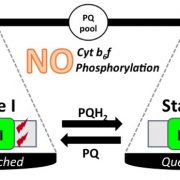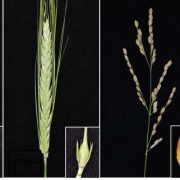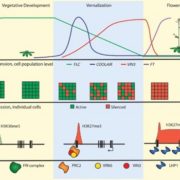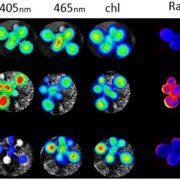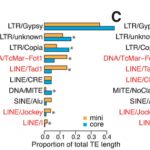A novel hypothesis for the role of photosynthetic physiology in shaping macroevolutionary patterns (Plant Physiol)
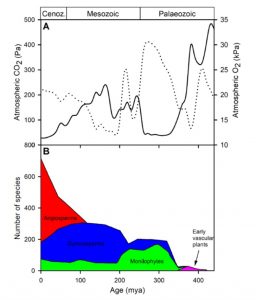 In the 450 million(ish) years since plants acquired the ability to live on land, they have caused dramatic changes in the concentrations of atmospheric CO2 and O2 levels. As an example, due to tremendous increases in photosynthesis, CO2 levels dropped and O2 levels rose dramatically in the late Paleozoic (about 300 million years ago), but then these trends were reversed due to increased plate tectonic and volcano activity. These striking atmospheric changes coincide with changes in the dominance of three groups of vascular plants: first the ferns, then gymnosperms during the period of highest CO2 levels, followed by angiosperms in the time when CO2 levels declined again. In this Letter, Yiotis and McElwain investigate how these atmospheric changes might have affected the fitness of these three groups of plants, through modelling following measurements made while altering both gas levels. They show that the groups differ in their photosynthetic efficiency (as consequences of mesophyll and stomatal conductance, as well as Rubisco efficiency) at various CO2 and O2 levels, which may have contributed to their relative abundance. They also note that rising CO2 levels today are likely to favor gymnosperms. (Summary by Mary Williams) Plant Physiol. 10.1104/pp.19.00749
In the 450 million(ish) years since plants acquired the ability to live on land, they have caused dramatic changes in the concentrations of atmospheric CO2 and O2 levels. As an example, due to tremendous increases in photosynthesis, CO2 levels dropped and O2 levels rose dramatically in the late Paleozoic (about 300 million years ago), but then these trends were reversed due to increased plate tectonic and volcano activity. These striking atmospheric changes coincide with changes in the dominance of three groups of vascular plants: first the ferns, then gymnosperms during the period of highest CO2 levels, followed by angiosperms in the time when CO2 levels declined again. In this Letter, Yiotis and McElwain investigate how these atmospheric changes might have affected the fitness of these three groups of plants, through modelling following measurements made while altering both gas levels. They show that the groups differ in their photosynthetic efficiency (as consequences of mesophyll and stomatal conductance, as well as Rubisco efficiency) at various CO2 and O2 levels, which may have contributed to their relative abundance. They also note that rising CO2 levels today are likely to favor gymnosperms. (Summary by Mary Williams) Plant Physiol. 10.1104/pp.19.00749


